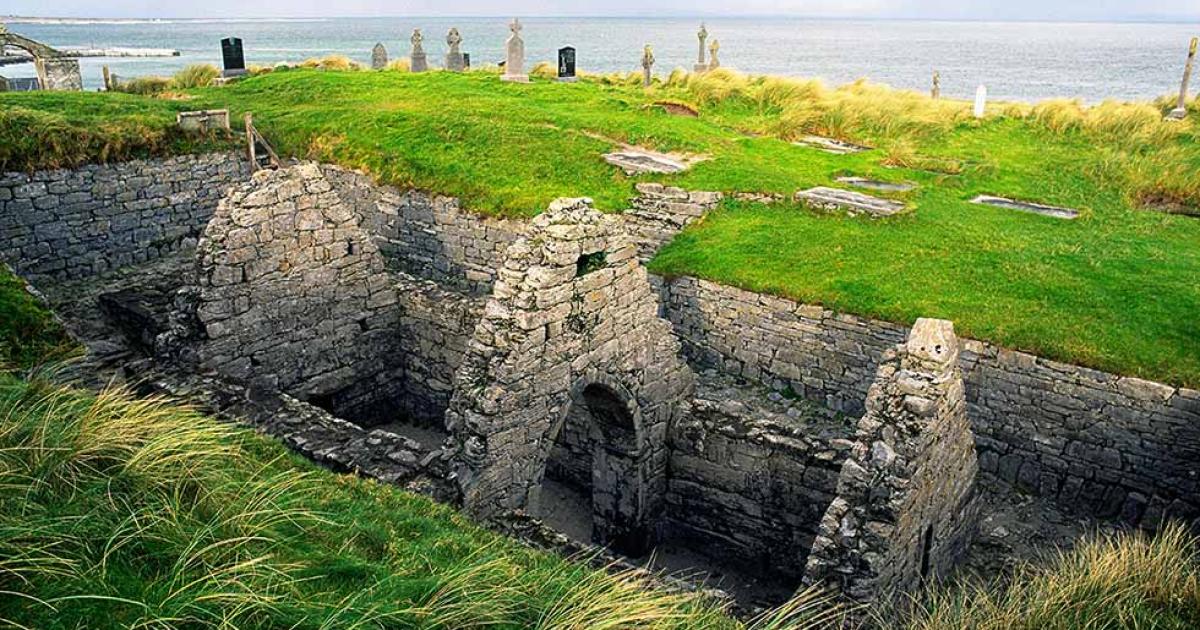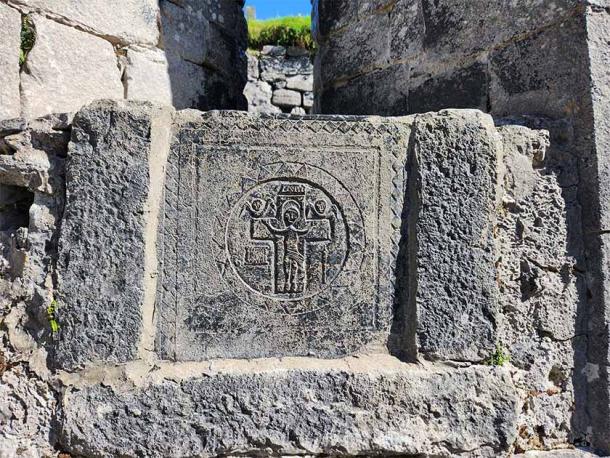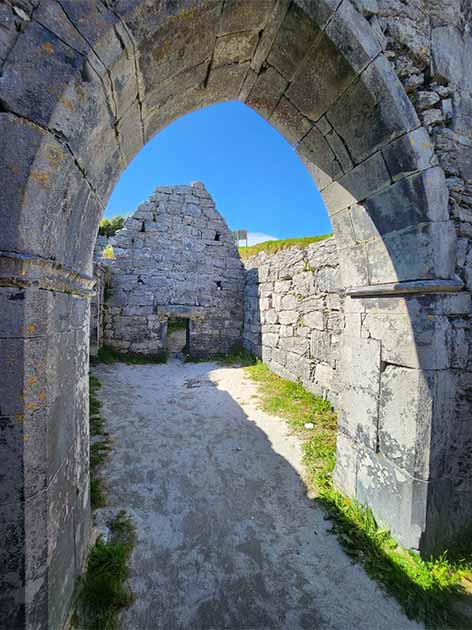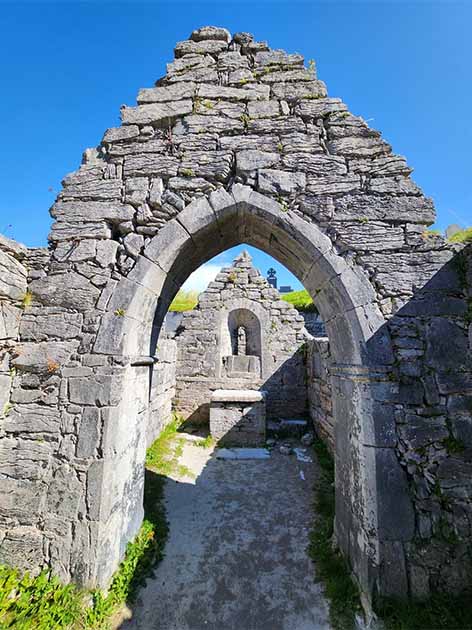
The Sunken Church of Inis Oírr and the Heritage of Saint Cavan
With its long history and even longer memory, Ireland is a nation that offers plenty to historians. From its ancient history and Celtic identity, to the Viking invasions and many wars for independence, Ireland is a real history book all on its own. It is also one of the earliest Christian nations, and as such it has a long tradition of saints and monastery-building. At Inis Oirr, in the Aran Islands to the west of the Irish mainland, lies a sunken church that is unique in every regard. Known as the Sunken Church of Inis Oirr, it provides an intriguing glimpse into the past of the area, as well as the spread of Christianity in Ireland.

Aerial landscape of Insheer Island, the smallest of the Aran Islands and home to the Sunken Church. (Evaldas / Adobe Stock)
Saint Cavan and the Sunken Church of Inis Oirr
Inis Oírr is the Irish name for Inisheer, the smallest and easternmost of the three Aran Islands, a group of three islands located off the western coast of Ireland in the Atlantic Ocean. They are known for their rugged beauty, unique culture and strong Irish heritage.
The three islands that make up the Aran Islands are Inishmore ( Inis Mór), Inishmaan ( Inis Meáin), and Inis Oírr ( Inisheer). With an area of about three square kilometers, Inisheer is the smallest, but it does not lack any beauty. Known for its charming landscapes, including sandy beaches, ancient ruins and unique flora, Inisheer’s popular attractions include the infamous Sunken Church, O'Brien's Castle and the Plassey Shipwreck.
- Saint Theodora of Vasta Spawned a Miraculous Church of Sprouting Trees
- Church of the Apostles Found? Maybe, But It’s Underwater for Now

Relief carving of a crucifixion scene behind the altar in the Sunken Church. Credit: Ioannis Syrigos
The sunken church is most commonly known after the name of its patron saint, Cavan ( Caomhán). But it is also known as Teampall Cheannannais in Irish. Saint Caomhán (Cavan or Kevin) of Inisheer is the island’s patron saint, and “by far the most celebrated of all the saints of the Aran Islands.”
While little is known about him, some suggest that he was a brother of Saint Kevin of Glendalough, the first abbot of Glendalough in County Wicklow. Tradition states that Saint Cavan visited and dwelt on the island, establishing a monastic community there. According to some sources, he was a revered figure, living an austere life devoted to God and solitude.
It is commonly agreed by scholars that Saint Cavan died around 865 AD, as some historic sources suggest. He was laid to rest in a modest stone-built tomb at the island’s eastern edge. Later, on that same site, a church was built, around the 10th century AD, which became known as Saint Caomháin’s Church.

Saint Cavan’s Church, known locally as the Sunken Church, on Inisheer. (PicturePrince / CC BY-SA 4.0)
How the Sunken Church Got Its Name
Due to its proximity to the sandy shores of Inisheer, the church has been subject to strong gusts of wind and accumulations of sand. Over the centuries, as the pages of history kept turning and the church was gradually abandoned and lost to time, the sand drifts kept burying it. At a certain point it completely disappeared from view, buried by the sand.
It has now been fully excavated from the sand and is annually maintained by the islanders themselves to keep it clear of sand. However, because of this, it can be found a few meters below ground level and appears sunken. Hence its name—the sunken church—and unique appearance.
Today, the excavated building is one of the best preserved 10th century churches in Ireland, even though it is in a ruinous state. It clearly displays the classic architecture style that was popular at the time, as well as the Irish building traditions.

Inside the sunken church of Saint Cavan. Credit: Ioannis Syrigos
Alas, the entirety of the building has been lost to time - most of what remains visible today is the chancel—the space around the altar. Nevertheless, detailed archeological excavations revealed that about one hundred years after the church was built, it was expanded, giving way to a wider nave—the central part of the building.
The now-sunken church serves as a clear confirmation that religious life was bustling in Inisheer as early as the 11th century, a time when Christianity was firmly rooted even in the remote corners of Ireland.
- Rock of Cashel: From 2,000-Year-Old Royal Stronghold to Symbol of Christian Power
- The Remote Irish Monastery Where Medieval Christianity Meets Fictional Jedi Spiritualism
Even though ruinous, the remains of Saint Cavan’s church are a place where peace reigns. Visiting the site, one can feel the echoes of history that are captured in the weathered stones. It is a perfect place for some contemplation and quiet introspection.
Off to the side of the sunken church is the resting place of Saint Cavan. It is a small tomb, also partially below ground, with a modern roof on top. Visitors can descend a small flight of steps and pay their respects to the Saint, embracing the quiet and contemplative ambience within.

Inside the sunken church of Saint Cavan. Credit: Ioannis Syrigos
The Charms of Inisheer
Although the smallest of the Aran Islands, Inisheer has plenty to offer to visitors. Besides its picturesque landscapes, it boasts a far-reaching history that is clearly reflected in its character and appearance. Visitors can admire the remnants of the 14th century O’Brien’s Castle near the island’s summit, Saint Fiachra's holy well near Cill Gobnait, the island’s lighthouse, or even the 1500 BC megalithic tumulus called Cnoc Raithní. A small island brimming with history—just like Ireland itself!
Top image: The sunken church known as St Cavan's Church on Inisheer Island. Source: David Matthew Lyons / Adobe Stock
References
Ostberg, R. 2019. Inis Oirr: Walking to the Well. RENÉ OSTBERG. Available at: https://reneostberg.com/tag/inis-oirr/
Passmore, P. J. No date. Inis Oírr — Island of Cures and Healing Wells. National Catholic Register. Available at: https://www.ncregister.com/blog/inis-oirr
Unknown. 2023. The Sunken Church of Inis Oírr. Wanderly Wagon. Available at: https://wanderlywagontours.com/locations/inis-oirr-sunken-church-graveyard/















